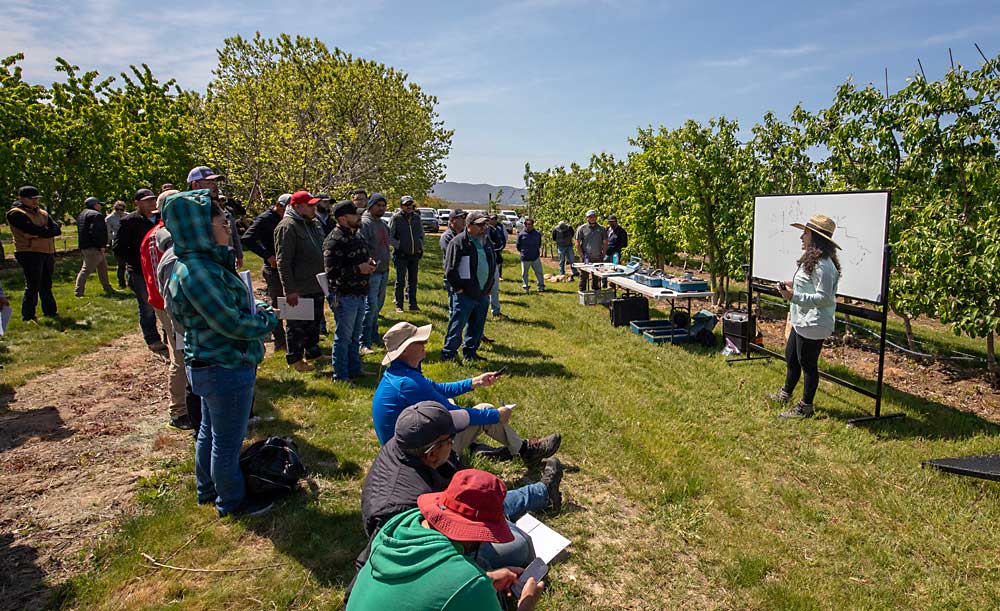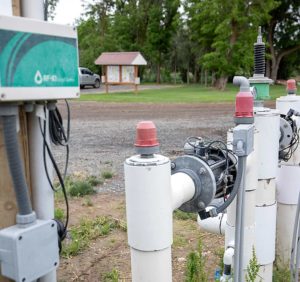—story by Ross Courtney
—photo and video by TJ Mullinax

Irrigation specialist Maria Zamora Re has been at Oregon State University for three years but made her first public presentation specifically to the tree fruit industry on May 8 at a Washington State University field day near Prosser.
Zamora Re, an assistant professor of biological and ecological engineering and irrigation specialist at OSU extension in Corvallis, was hired in 2021 with funding from the Oregon State Legislature to help improve the efficiency of the state’s agricultural water use. She specializes in irrigation scheduling. So far, she has spent most of her time on berry crops and pasture.
For about 70 people in attendance at the Spanish-language field day, held at the Roza research orchard at WSU’s Irrigated Agriculture Research and Extension Center, she explained how to use sensor data to schedule irrigation.
Zamora Re showed the group a tensiometer, which is a water-filled tube with a porous tip that measures soil water tension, and a reflectometry sensor, which uses electrical pulses between conductor rods to measure water volume in soil. Both tools are commonly used in the tree fruit industry and generate data that can be viewed on a computer or phone screen.
The rest of her presentation explained how to make sense of that data — particularly how to keep water above the maximum allowable depletion point, below which the tree experiences water deficit.
The idea, she said, is that the soil moisture information should help drive decisions regarding when to irrigate and when not to.
Other speakers included WSU faculty explaining water use in horticulture and three vendors discussing how their software and sensors can inform and even automate the irrigation process that Zamora Re described.








Leave A Comment